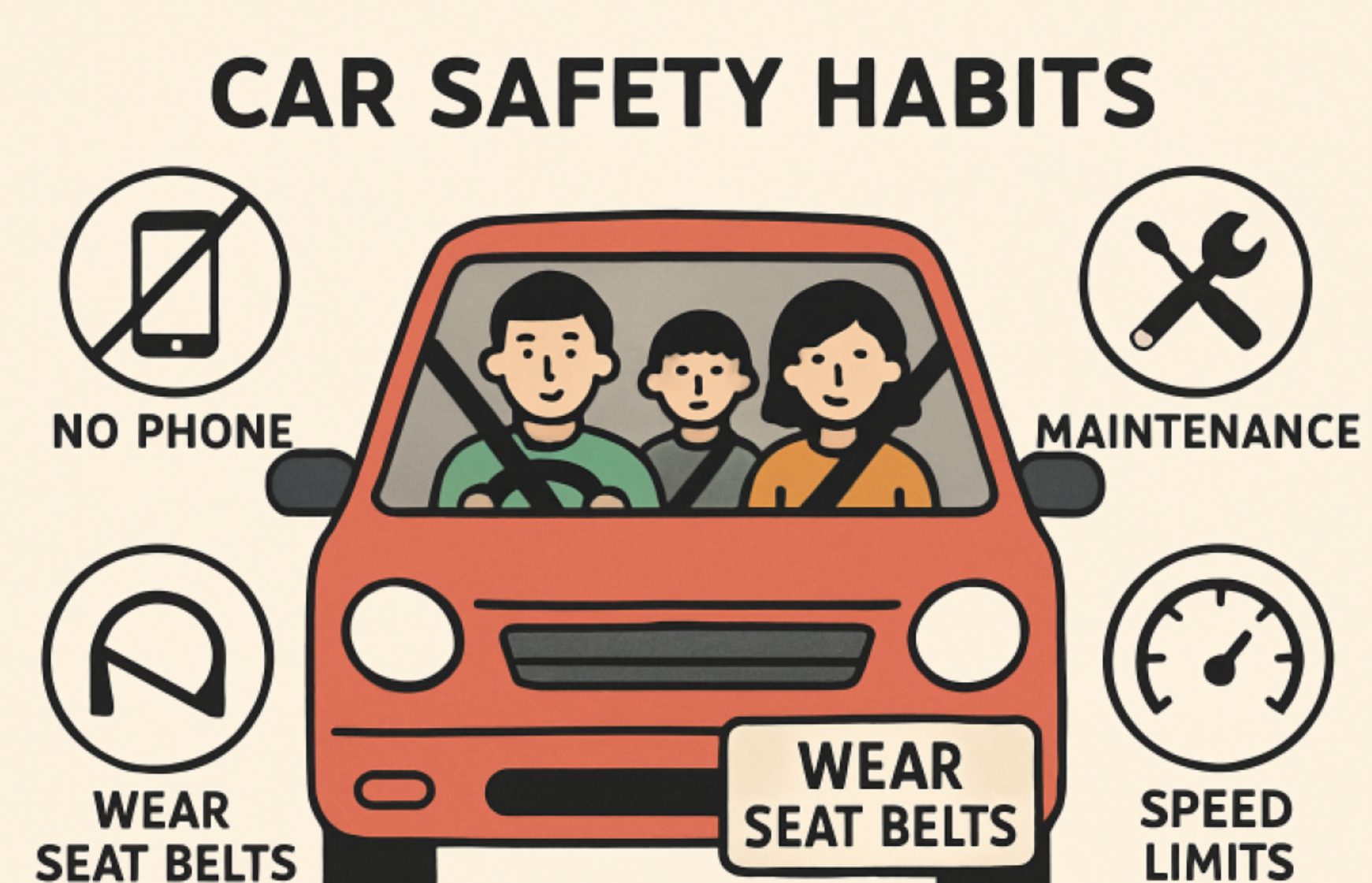Driving is essential for many, but it involves risks and responsibilities. Whether for commuting, errands, or leisure, safety must always be a priority. Developing safe habits protects lives and prevents accidents, ultimately benefiting drivers, passengers, pedestrians, and the broader community. Mindful driving reduces the long-term consequences of mistakes—simple actions like focusing and following rules considerably lower accident risks. Many accidents happen near home on routine trips, so adopting key safety habits is crucial. By prioritizing safety, drivers set a good example and help create safer roads for everyone.
Eliminate Distractions
Distraction behind the wheel significantly contributes to road accidents, with thousands of crashes annually linked to drivers dividing attention among phones, food, or entertainment. In 2021, distracted driving caused over 3,500 U.S. fatalities, per NHTSA. Glancing at your phone or letting your mind wander can be fatal. To maximize safety, stow away devices and complete tasks, like adjusting navigation or playlists, before driving. Educate passengers on minimizing distractions and encourage them to maintain their focus on driving. Eliminating distractions significantly reduces the risk of a motor vehicle accident and protects everyone on the road.
Adhere to Speed Limits
Speeding significantly increases the risk of crashes and the severity of injuries. In 2021, it contributed to 29% of traffic fatalities, affecting reaction time to sudden events such as children crossing the road or traffic stops. Always obey speed limits, especially in adverse weather conditions, school zones, residential areas, and construction zones. This improves vehicle control, reduces wear and tear, boosts fuel efficiency, and provides more time to react. Adjusting speed shows care for your and others’ safety.
Regular Vehicle Maintenance
Maintaining your vehicle isn’t just about longevity—it’s about safety during unexpected situations. Even minor issues, such as worn brakes or bald tires, can cause loss of control or increased stopping distances. Regularly check brakes, tires, lights, wipers, and fluids. Properly inflated tires and responsive brakes enhance control and reduce the risk of breakdowns or skidding. Proactive maintenance helps avoid being stranded, costly repairs, or accidents. Simple, regular checks can prevent serious problems and enhance your driving experience.
Always Wear Seat Belts
Seat belts save over 15,000 lives annually in the U.S., says the CDC. Not wearing one increases the risk of serious injury or death, even on short trips or at low speeds. Buckling up should be as automatic as locking doors or starting your car. Always check that everyone is fastened, including backseat passengers and children in car seats. Encourage others to do the same and never drive until all seat belts are secured. It takes a second but can save lives.
Stay Informed About Vehicle Safety Features
Modern vehicles have advanced safety features, including forward collision warnings, emergency braking, lane departure alerts, and pedestrian detection, which are becoming increasingly standard. The U.S. will enhance safety ratings for 2026 models and beyond, making future cars safer. Reading the manual and discussing features with your dealer helps you learn to use these technologies effectively. Remember, these are assistive tools—not a replacement for attentive driving—so stay alert for safer journeys.
Adjust for Weather and Road Conditions
Weather can turn a routine drive into a hazard. Rain, snow, fog, and ice require caution, even for experienced professionals. Check real-time weather forecasts and road alerts before traveling. Slow down, increase following distance, and use headlights or fog lights in low visibility. Be cautious on bridges and overpasses, which freeze first. For more weather safety tips, visit the National Weather Service. Master skills like handling skids, braking in rain, and navigating snow and ice to stay safe.
Avoid Driving While Tired
Fatigue impairs reaction, judgment, and concentration, similar to the effects of alcohol. The National Safety Council estimates that drowsy driving causes thousands of crashes annually. Fatigued drivers may miss signs, drift out of lanes, or fall asleep at the wheel. To prevent accidents, be well-rested before long drives, take breaks every two hours, share driving duties, and watch for signs such as heavy eyelids, yawning, or difficulty focusing. If sleepy, pull over and rest; risking safety to reach your destination is unsafe.
Respect Roadway Patterns
Understanding and obeying roadway patterns, such as merging on highways, navigating roundabouts, and yielding, can significantly reduce the risk of accidents. Different environments—such as city, rural, and highway—pose unique challenges. Stay familiar with these, especially in new areas, and err on the side of caution at unfamiliar intersections. Defensive driving courses can also improve skills and reactions. Building safe habits not only protects you but promotes a culture of safe driving, helping create a safer community for everyone and reducing the risk of serious accidents.
Final Thoughts
Safe driving goes beyond simply following the rules—it requires awareness, preparation, and consistent responsibility behind the wheel. By eliminating distractions, respecting speed limits, maintaining your vehicle, and utilizing modern safety features, you significantly reduce the risks to yourself and others. Simple habits, such as wearing seatbelts, adjusting to weather conditions, avoiding fatigue, and respecting roadway patterns, reinforce a culture of safety that benefits every driver and passenger. Prioritizing these practices not only protects lives but also ensures that every journey comes to a safe conclusion.



































